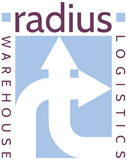Moving goods internationally is a complex process. With the support of the right freight forwarding company, you will have access to the best rates and the quickest transport routes. However, if you’re just starting out and wondering where to start, it pays to know what freight options are available to you. And, which one you should choose for your cargo. Let’s take a look at the 4 main forms of freight transport – road, rail, sea and air.
Road Freight
As the name suggests, road freight is the movement of goods by road. This can be done using any number of different vehicles, from cars or small vans through to articulated lorries or tractor units with trailers. Research has found that the most common group of products transported by road are metal ores and mining products followed by mineral products and metal products. Road freight gives you greater access to restricted areas, makes it easy to change the route if obstructions arise and is generally one of the easier forms of transport to track. On the flip side, these on-road freight vehicles have a smaller load capacity, are restricted by local traffic and have a higher risk of damage.
Rail Freight
Rail freight uses railroads and trains to transport goods. These freight trains (also known as cargo trains) haul everything from materials and containers through to specialised cargo along the rail tracks to their end destination. The most popular goods transported in this manner include hazardous materials, vehicles, steel palettes and oversized cargo. Rail freight provides a larger transport capacity, is more reliable than road due to it being less impacted by traffic or weather and is recognised as one of the most sustainable options too. However, you are restricted to the delivery stops for your goods due to the rails and it can get expensive if you’re only moving small shipments.
Sea Freight
Sea freight is the international movement of goods by carrier ships. These goods are normally packed into containers which are loaded onto the vessel in an organised manner. Most carrier ships have a very large capacity, capable of carrying upwards of 10,000 containers at any given time. The most popular types of cargo on these ships include oils, diesel, petrol, foods and drinks as well as electrical equipment too. Sea freight normally affords you the best prices due to capacity and they can be used in collaboration with other transportation methods. However, they are restricted by bad weather, have inflexible timetables and can be challenging to track.
Air Freight
Air freight is the movement of cargo and freight via air carriers, both charter and commercial. It provides good, quick access to other countries with the capacity to take on large quantities of goods. The most common exports by air include cut flowers, fresh fruits/vegetables and urgent goods that are time-sensitive. Air freight is the quicker form of international freight movement with good flexibility and access to more areas across the world. It is also deemed the safest form of goods transportation and can benefit from technology including temperature-control measures. However, it is also the most expensive and has strict restrictions on certain hazardous goods.
The right freight transport for your goods will depend on each individual situation. To find out which one you should go for, we highly recommend working with a freight forwarder, like the team here at Radius Warehouse and Logistic Services.



